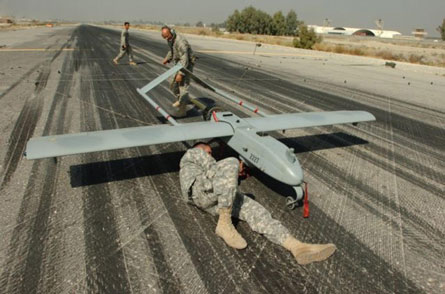The highly regulated US national airspace may soon become slightly more accessible to the US Army's fleet of unmanned air vehicles.
A small sense and avoid system designed by Ohio-based Defense Research Associates has been flown on an AAI Shadow 200, says Tom Bachman, AAI's vice-president for new technologies.
The flight is the beginning of a process to equip the army's fleet of RQ-7 Shadow 200s with a sense and avoid system to operate more easily in non-restricted airspace within the USA.
At certain bases, such as Marine Corps Air Station Cherry Point, North Carolina, the military must receive a certificate of authorisation from the Federal Aviation Administration before flying a UAV.
 |
|---|
© US Army |
Bachman says this system makes getting the certificate of authorisation "a little bit easier".
The sense and avoid system, however, is not a solution to the larger problem of eventually clearing UAVs to operate seamlessly in US airspace without a certificate of authorisation and other restrictions.
The system only scans for targets in the forward hemisphere of the UAV, Bachman says. So far, the FAA has not provided definitive guidance on minimum performance for a sense and avoid system, but is expected to require 360° capability.
DRA's sense and avoid system comprises three cameras and processors, limiting its effectiveness to visual flight rules conditions. An objective sense and avoid system must include other kinds of sensors to maintain awareness at night or in bad weather, Bachman says.
So far, DRA's system has demonstrated the ability to detect and track other aircraft moving in the forward hemisphere. In later demonstrations, the system also will be able to autonomously adjust the UAV's own flight path to avoid other air traffic, Bachman says.
Source: Flight International
















